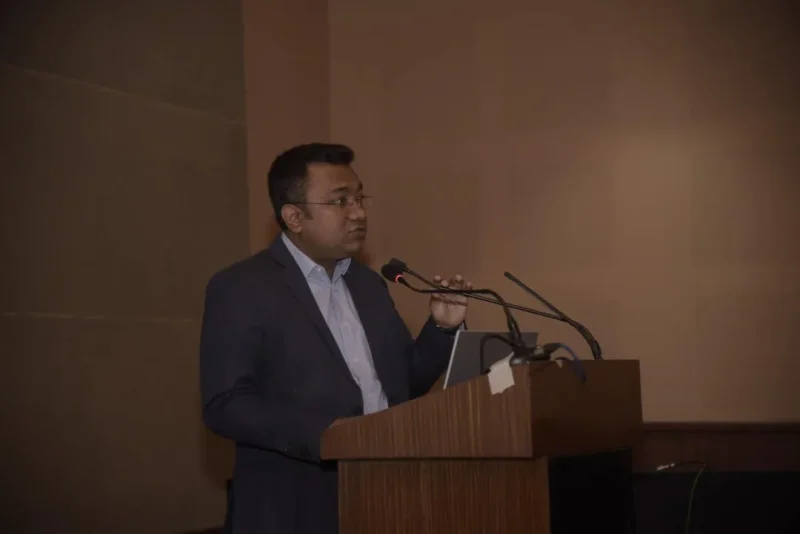UN decries Peru approval of law granting amnesty to human rights violators – JURIST Legal News

Report on Peruvian Amnesty Law and its Implications for Sustainable Development Goals
Introduction and Legislative Context
A report on the recent legislative action in Peru, where an amnesty law was enacted for human rights violations committed during the 1980-2000 internal armed conflict. This law, approved by the Peruvian Congress in June and signed by President Dina Boluarte on August 13, grants amnesty to members of the Armed Forces, National Police, and self-defense militias over the age of 80. This report analyzes the law’s direct conflict with international human rights standards and its significant negative impact on the achievement of the Sustainable Development Goals (SDGs), particularly SDG 16.
Conflict with SDG 16: Peace, Justice and Strong Institutions
The amnesty law fundamentally challenges Peru’s commitment to SDG 16, which aims to promote peaceful and inclusive societies, provide access to justice for all, and build effective, accountable, and inclusive institutions. The contradictions are evident in several key areas:
- Undermining Rule of Law and Access to Justice (Target 16.3): The UN High Commissioner for Human Rights, Volker Türk, stated the law grants impunity to perpetrators of gross human rights violations. This action directly obstructs the path to justice for thousands of victims of the conflict, contravening the core principle of ensuring equal access to justice for all.
- Eroding Institutional Accountability (Target 16.6): By shielding state agents from prosecution for crimes against humanity and war crimes, the legislation weakens the development of accountable and transparent institutions. It sets a precedent that undermines efforts to hold state actors responsible for their actions.
- Denying Truth and Reparations (Target 16.10): International organizations, including Amnesty International and UN experts, have criticized the law as an “affront to the thousands of victims who deserve truth, justice, reparations, and guarantees of non-recurrence.” This denial of truth and justice is a major setback for national reconciliation and sustainable peace.
Violation of International Law and Broader SDG Implications
The legislation not only impacts SDG 16 but also contravenes international legal frameworks that are foundational to the entire 2030 Agenda for Sustainable Development.
- Breach of International Obligations: The law is contrary to Peru’s obligations under the Geneva Conventions, which mandate the prosecution of war crimes, and the Convention on the non-applicability of statutory limitations to war crimes and crimes against humanity. This disregard for international law weakens the global framework supporting peace and justice.
- Impact on SDG 10 (Reduced Inequalities): The internal conflict disproportionately affected marginalized and vulnerable populations. Granting amnesty exacerbates inequalities by denying these communities a legal pathway to justice and redress, reinforcing their systemic disadvantages.
- Impact on SDG 17 (Partnerships for the Goals): The widespread condemnation from the UN and other international bodies highlights a divergence between Peru’s national policy and the global partnerships working to uphold human rights. This unilateral action undermines the collaborative spirit required to achieve the SDGs.
Conclusion
The promulgation of the Peruvian amnesty law represents a significant regression for human rights and the rule of law in the nation. It directly undermines the principles of SDG 16 by prioritizing impunity over accountability and justice. The international community has strongly condemned this measure, urging the Peruvian government to reverse the law to honor its international commitments, uphold the rights of victims, and realign its national policies with the global objectives of peace, justice, and sustainable development.
Analysis of the Article in Relation to Sustainable Development Goals
1. Which SDGs are addressed or connected to the issues highlighted in the article?
-
SDG 16: Peace, Justice and Strong Institutions
This is the most relevant SDG as the article’s central theme is the erosion of justice, the rule of law, and institutional accountability in Peru. The legislation granting amnesty directly undermines the principles of justice for victims of human rights violations. The article highlights this by quoting the UN High Commissioner, who stated the law is an “affront to the thousands of victims who deserve truth, justice, reparations, and guarantees of non-recurrence, not impunity.” This directly engages with the goal of building peaceful, just, and inclusive societies with accountable institutions.
-
SDG 10: Reduced Inequalities
The amnesty law creates and exacerbates inequalities by denying a specific group—victims of the 1980-2000 armed conflict—equal access to the legal system. It establishes a legal framework where perpetrators of “gross human rights violations” are shielded from prosecution, while their victims are left without legal recourse. This creates a profound inequality of outcome before the law, directly contradicting the aim of SDG 10 to ensure equal opportunity and reduce inequalities.
2. What specific targets under those SDGs can be identified based on the article’s content?
-
Under SDG 16: Peace, Justice and Strong Institutions
-
Target 16.3: Promote the rule of law at the national and international levels and ensure equal access to justice for all.
The article directly addresses this target by detailing how the Peruvian amnesty law violates “Peru’s obligations under international law, which prohibits amnesties for cases of serious human rights violations.” Furthermore, the call to “provide legal access to victims of the conflict” and the criticism that the law “undermined victims’ right to justice and truth” explicitly point to a failure to ensure equal access to justice.
-
Target 16.6: Develop effective, accountable and transparent institutions at all levels.
The law grants amnesty to “members of the Armed Forces, the National Police, and self-defense militias,” who are agents of state or state-aligned institutions. By shielding them from accountability for crimes committed during the conflict, the law weakens the accountability of these institutions. The UN’s warning that the law would “allow the perpetrators of war crimes to avoid liability” underscores this direct challenge to institutional accountability.
-
-
Under SDG 10: Reduced Inequalities
-
Target 10.3: Ensure equal opportunity and reduce inequalities of outcome, including by eliminating discriminatory laws, policies and practices.
The amnesty bill is a policy that creates a severe inequality of outcome. It legally separates society into two groups: perpetrators of human rights abuses who are granted impunity, and their victims, who are denied the right to justice. This law is a discriminatory practice that systematically disadvantages victims of the armed conflict, preventing them from seeking legal redress and achieving justice.
-
3. Are there any indicators mentioned or implied in the article that can be used to measure progress towards the identified targets?
-
For Target 16.3 (Promote rule of law and access to justice)
-
Implied Indicator: Existence of laws granting amnesty for gross human rights violations.
The article’s entire focus is on the “promulgation of this amnesty law.” The existence of such a law is a direct, qualitative indicator that measures a country’s regression from promoting the rule of law and ensuring access to justice. The condemnations from the UN and Amnesty International serve as evidence of this negative indicator.
-
-
For Target 16.6 (Develop accountable institutions)
-
Implied Indicator: Lack of mechanisms for holding state security forces accountable for human rights violations.
The article indicates a failure in this area by describing how the law grants amnesty to the “Armed Forces” and “National Police.” This legislation acts as a formal mechanism to prevent accountability, thereby serving as a clear indicator of institutional weakness and lack of accountability.
-
-
For Target 10.3 (Ensure equal opportunity and reduce inequalities of outcome)
-
Implied Indicator: Presence of laws or policies that deny legal recourse to specific population groups.
The amnesty law is a policy that specifically targets the perpetrators and victims of the 1980-2000 conflict. It explicitly denies the victims their right to justice, creating a legal barrier that does not exist for other citizens. This serves as an indicator of a policy that institutionalizes inequality of outcome for a specific group.
-
4. Summary Table: SDGs, Targets, and Indicators
| SDGs | Targets | Indicators (Implied from the Article) |
|---|---|---|
| SDG 16: Peace, Justice and Strong Institutions | 16.3: Promote the rule of law at the national and international levels and ensure equal access to justice for all. | The existence of the amnesty law itself, which acts as a legal barrier to justice for victims of gross human rights violations. |
| SDG 16: Peace, Justice and Strong Institutions | 16.6: Develop effective, accountable and transparent institutions at all levels. | The lack of accountability for state institutions (Armed Forces, National Police) as formalized by the amnesty law. |
| SDG 10: Reduced Inequalities | 10.3: Ensure equal opportunity and reduce inequalities of outcome, including by eliminating discriminatory laws, policies and practices. | The presence of a law that creates unequal outcomes by denying legal recourse to a specific group (victims of the conflict) while granting impunity to another (perpetrators). |
Source: jurist.org

What is Your Reaction?
 Like
0
Like
0
 Dislike
0
Dislike
0
 Love
0
Love
0
 Funny
0
Funny
0
 Angry
0
Angry
0
 Sad
0
Sad
0
 Wow
0
Wow
0

















































:focal(1500,1000)/https://media.globalcitizen.org/a6/9a/a69a4720-d8a1-4715-b596-18738d03c05c/rotary_polio_hero_image.jpg?#)






/countries/sri-lanka/photo-credit---dmc-sri-lanka.tmb-1200v.jpg?sfvrsn=dc298bcc_1#)

















